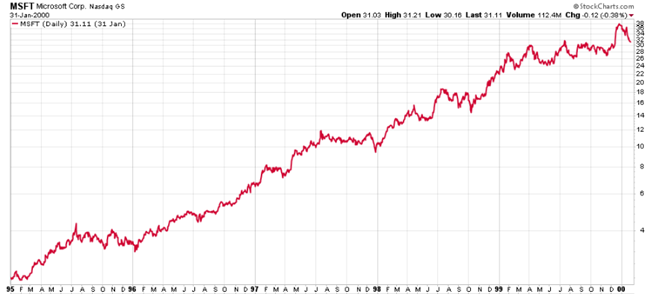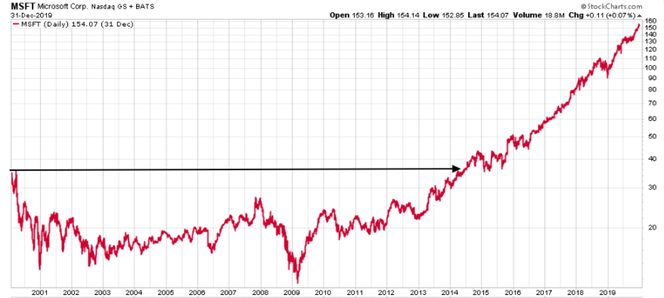The Search for New Bull Markets

What is it about helium that makes your voice sound like Donald Duck? Helium is lighter than the air we breathe every day - six times lighter - and sound moves three times faster through it. So a deep breath from a party balloon will make anyone sound funny.
Similarly, sulphur hexafluoride is six times heavier than normal air and makes you sound like Darth Vader. In small quantities, it is a good gag too, but breathing sulphur? Darth Vader had to wear that black helmet because he was burned badly by, well, sulphur. Take little breaths.
There’s a global helium shortage right now, which may explain the sour mood of the world. Fewer party balloons and less duck-voice gags are big wet blankets on the world’s fun. But, sadly, the helium shortage doesn’t stop at just party balloons. The stuff is really important to our modern society.
Helium is used just about everywhere:
- Weather balloons
- Glass and fibre optics
- Extreme cooling, such as MRI machines, physics experiments, biological manufacturing, and refrigeration
- Air bags
- Deep sea diving air mixes
- Lasers and welding
- Semiconductor manufacturing
Even though helium is the second most abundant element in the universe, it is rare on Earth. It occurs when uranium decays, which takes a l-o-n-g time, and is filtered out of natural gas during the refining process. Just a few gas-rich countries produce it, led by the U.S., Australia, Qatar, and Russia. Canada produces some, too, but not much yet.
Most people know the U.S. has a Strategic Petroleum Reserve (SPR) to buffer shortages or oil embargoes like those experienced in the 1970s. Did you know we also have a helium reserve? Helium is so critical to modern industry that the U.S. created the Federal Helium Reserve in Texas in 1960. So we have lots, and there is nothing to worry about.
Or do we?
The Cure for High Prices Is High Prices and the Cure for Low Prices Is Low Prices
Thanks to a glut almost 30 years ago, the U.S. government began to sell off its helium in 1996. They didn’t bother “refilling the tank” at the Federal Helium Reserve because it was plentiful … until it wasn’t. In 2013, a shortage hit, and the price doubled. Government officials running the Reserve realized they had basically been giving it away and there was little left.
Prices flat lined until spiking again this year to almost double the 2013 price. This was due to a leak in the Federal Helium Reserve (did someone bring a pin to work?), and then a January explosion closed a major Russian facility. The war in Ukraine ended remaining imports from Russia.
With natural gas prices spiking in Europe because of Russian sanctions, there is now far more need to burn natural gas to power air conditioners than stripping out the trace bits of helium.
So, if you have a celebration ahead, get your helium now.
Helium is just one example of the pendulum nature of commodity markets. Things get cheap, and everyone stops exploring. Things get expensive, and everybody produces more. Mustard is the latest example. Europeans can’t find Dijon mustard because Canada’s 2021 crop was cooked by the Heat Dome.
Oil producers went through their own horrific slump in 2014, when Saudi Arabia flooded the world with oil, and again in 2020 when oil prices dropped below zero. Drilling firms parked their rigs, and the crews switched to new jobs.
And oil wasn’t the only commodity affected. Today, we have low inventories of natural gas, uranium, fertilizer, copper, wheat, and lumber just to name a few. Even computer chips are in short supply.
Is it because of the war in Ukraine and Russian sanctions? Well, that tipped already-scarce supply over the edge, but the problems started a decade ago. We shut down manufacturing plants, mines, and oil fields because what they produced could not be produced profitably. Low prices led to low supplies, and then the war hit. Now, prices are sky high.

Eventually high prices will encourage high supplies. Farmers will plant “fencepost to fencepost”, and oil drillers will drill everywhere they can. The cycle will then start over.
Environmental permits have stalled new plantings and drilling, though, so this cycle of high prices could be with us longer than normal.
High Stock Prices
Stocks are not much different from commodities. A long run of success for any group of stocks leads to more issues of shares and more companies formed in that sector. Think of oil stocks in 1979 when six of the 10 largest companies in the world were oil companies. In 2000, it was telecom companies dominating the indexes. Bitcoin was the fad in 2021.
Once the fervour ends, prices plummet, and many investors are left holding the bag. But, where do investors turn the moment markets stabilize? They go BACK to the ones they fell in love with – the ones they need to recover their losses. And that is a mistake.
Here was the performance of Microsoft (NASDAQ MSFT) from 1995 through early 2000 - $2 to as high as $38:

Once the bull market in technology ended in 2000, investors bought and sold repeatedly with little effect – it took 14 years for Microsoft to start a new bull market.

New bull markets usually start somewhere else completely when old ones end.
As the technology bubble popped in 2000-2002, a new bull market started in the Emerging Markets and commodities:

“There’s Always a Bull Market Somewhere.” - Jim Cramer
It often pays to look at industries that have been laggards for years, such as:
- Manufacturing – Companies like Boeing (NYSE BA) and 3M (NYSE MMM) have suffered as manufacturing shifted overseas. Now, that production capacity is coming home.
- Commodities like uranium and copper. Uranium has now been recognized as ‘green’ by the European Union to help wean the continent off Russian oil. Copper is needed for the electrification of the world. Both have been stagnant for a decade. The U.S. government just authorized a new Uranium Reserve that will buy and store enriched uranium for reactor use.
- Health care – many drug stocks haven’t moved much in the last seven years. With an aging population, will that change?
What we do know is that the leaders of the last cycle – technology, cryptocurrencies, and cloud computing stocks – are unlikely to be the leaders of the next cycle.
The challenge is finding the new leaders.
Contact us to discuss further or find out where we are making changes to managed portfolios.





